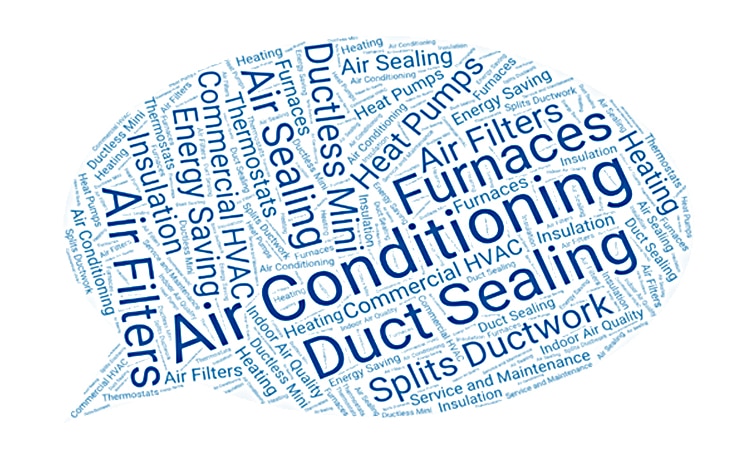HVAC Technical Terms

HVAC Technical Terms
The world of heating and air conditioning can be overwhelming, especially with all the complicated verbiage. Here’s a brief guide to some of the most important terms when it comes to HVAC. As you’ll see below, issues like energy efficiency, environmental impact, and cost savings when it comes to utility bills are at the forefront of our industry.
Freon®
Also known as R-22, this was the gold standard for refrigerant until 1987, when its role in negative environmental changes to the ozone layer was established. Today, federal law has severely curtailed its production, with total elimination scheduled by 2022. For this reason, the price of Freon® is skyrocketing, and only expected to rise over time. The problem? Many systems in buildings nationwide currently depend upon Freon® as their primary refrigerant. Therefore, appropriate maintenance, service, and future system planning are critically important for any business owner. Air-Tro consultants can help you assess your current equipment, and avoid unnecessary expense in the future. Also, see Refrigerant Retrofit and The Freon® Factor.
R410a
This refrigerant has been shown to be less harmful to the environment than Freon®, and is currently used in all new equipment on the market today. The good news? Along with using far less energy than older, Freon®-reliant equipment, new air conditioning systems also are more efficient than previous models. You’ll save money with lower utility bills, without sacrificing comfort. Air-Tro can show you how. See Phasing Out R-22 Refrigerant and A Future without Freon®.
SEER
This is an acronym for the Seasonal Energy Efficiency Ratio, an important number for any HVAC system. The higher the value, the more energy efficient the air conditioner, and typically, the lower its energy usage and subsequent costs to the user. A higher SEER means a system that is cheaper to run! The current minimum SEER allowed is 14.0. See Seer Rating.
AFUE
Annual Fuel Utilization Efficiency, or furnace efficiency. Floor furnaces and gravity heaters are typically rated at about 50%. Modern furnaces range from an 80% to 98% rating. See The AFUE Rating: What it means and why it matters.
Two-speed/Two-stage
Most air conditioners and furnaces run at either “off” or “on” status. However, many times you don’t need your system to run at full capacity. You need just a little heating or cooling to make things comfortable. Two-speed air conditioners and two-stage furnaces offer a second, lower speed, making things comfy but using less energy.
Variable/Modulating
Variable speed condensers, blowers, and modulating furnaces allow nearly unlimited flexibility in terms of capacity. They’ll match their output to your actual cooling or heating needs. These are the most comfortable, and the most efficient equipment choices on the market. See What is a Variable-Speed Furnace?
Don’t worry if you’re a little confused: these are all extremely complex subjects. Have questions? Need clarification? Please don’t hesitate to ask anybody on our Air-Tro team. That’s why we’re here! Since 1969, we’ve been keeping California comfortable. Call us today to find out more. (626) 357-3535.

